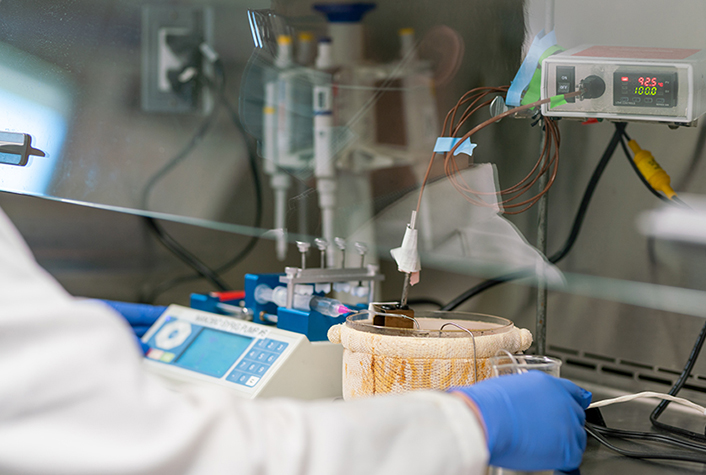Intense heat disarms COVID-19 virus in a split second, study finds

COVID-19, caused by the SARS-CoV-2, has plagued our world over the last year. In just one year, we have lost over half a million Americans and an estimated 2.5 million worldwide to this virus. The uncertainties about its long-term effects as well as how and where it spreads, particularly indoors, continues to motivate researchers and scientists to find solutions to contain the virus.
Arum Han, professor in the Department of Electrical and Computer Engineering at Texas A&M University, and his collaborators designed an experimental system to show that exposure of the virus to a very high temperature, even if applied less than a second, can be sufficient to neutralize the virus so that it can no longer infect another human host.
In March 2020, the United States began shutting down when COVID-19 cases began to rise. Over the past year, many have dealt with the severity of the virus that has negatively impacted our country in a number of ways, with the pandemic still ongoing. Getting back to a more normal societal environment is important and this research is a step in the right direction.
Applying heat to neutralize COVID-19 has been demonstrated before, but in previous studies temperatures were applied anywhere from one to 20 minutes. This length of time is not a practical solution as applying heat for a long period of time is both difficult and costly. Han and his team have now demonstrated that heat treatment for less than a second completely inactivates the coronavirus — providing a promising and efficient solution to mitigate the ongoing spread of COVID-19, particularly through long-range airborne transmission.
Medistar Corporation approached leadership and researchers from the College of Engineering at Texas A&M in the spring of 2020 to collaborate and explore the possibility of applying heat for a very short amount of time to kill COVID-19. Soon after, Han and his team got to work and built a system to investigate the feasibility of such a procedure. Their process works by heating one section of a stainless-steel tube, through which the coronavirus-containing solution is run, to a high temperature and then cooling the section immediately afterward. This experimental setup allows the coronavirus running through the tube to be heated up only for a very short period of time. Through this rapid thermal process, the team found the virus to be completely neutralized in a significantly shorter time than previously thought possible. Their initial results were released within two months of proof-of-concept experiments.
Han explained that if the solution is heated to nearly 72 degrees Celsius for about half a second, it can reduce the virus titer, or quantity of the virus in the solution, by 100,000 times which is sufficient to neutralize the virus and prevent transmission.
“The potential impact is huge,” said Han. “I was curious of how high of temperatures we can apply in how short of a time frame and to see whether we can indeed heat-inactivate the coronavirus with only a very short time. And, whether such a temperature-based coronavirus neutralization strategy would work or not from a practical standpoint. The biggest driver was, ‘Can we do something that can mitigate the situation with the coronavirus?’”
Their research was featured on the cover of the May issue of the journal Biotechnology and Bioengineering.
The lead authors of the work are electrical engineering postdoctoral researchers Yuqian Jiang and Han Zhang. Other collaborators on this project are Julian L. Leibowitz, professor, and Paul de Figueiredo, associate professor, from the College of Medicine at Texas A&M; biomedical postdoctoral researcher Jose A. Wippold; associate research scientist in Microbial Pathogenesis and Immunology Jyotsana Gupta; and electrical engineering assistant research scientist Jing Dai.
This work has been supported by grants from Medistar Corporation. Several research personnel on the project team were also supported by grants from the National Institutes of Health’s National Institute of Allergy and Infectious Diseases.

